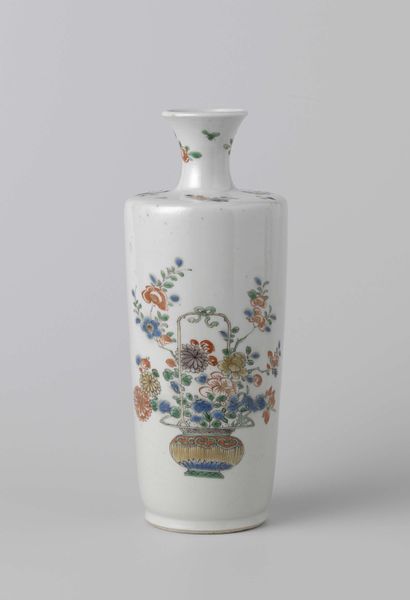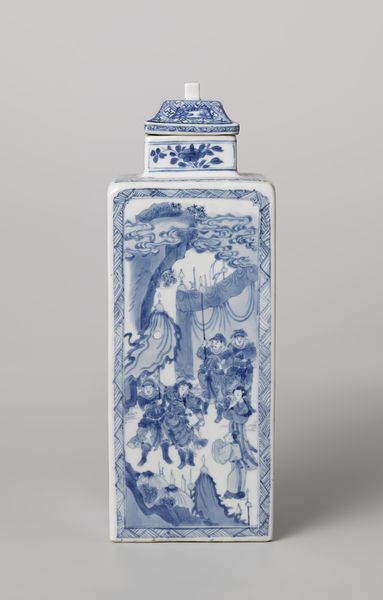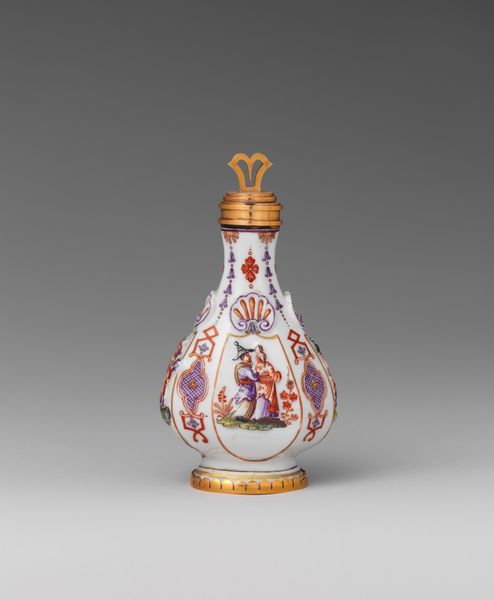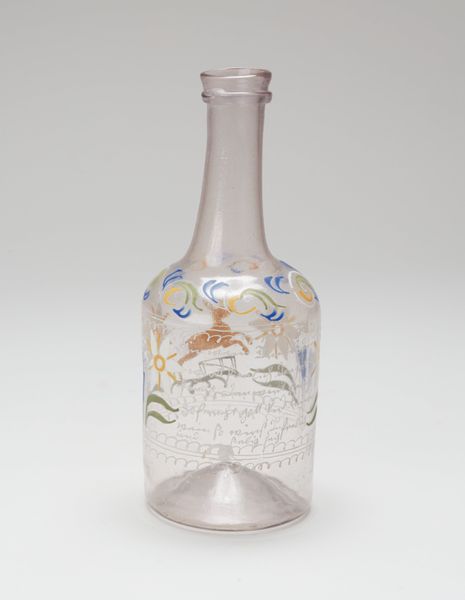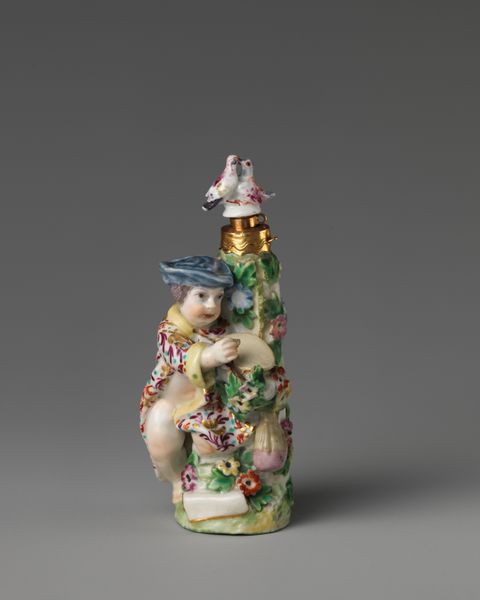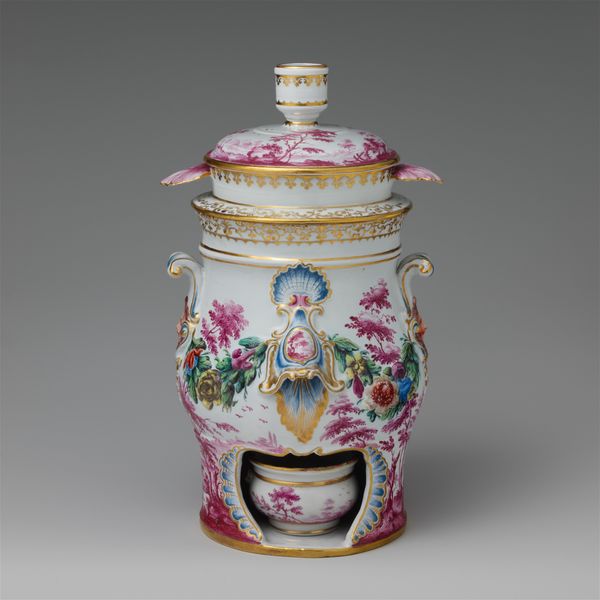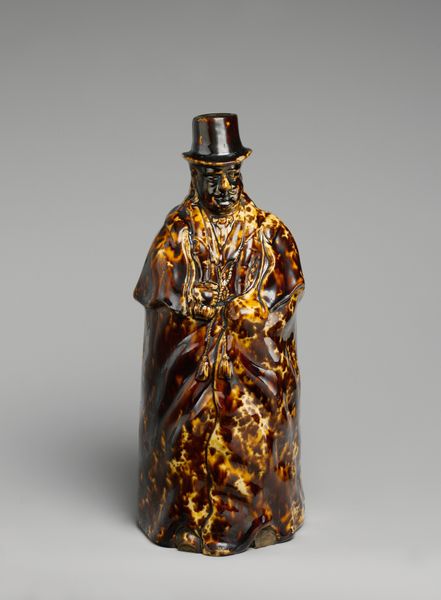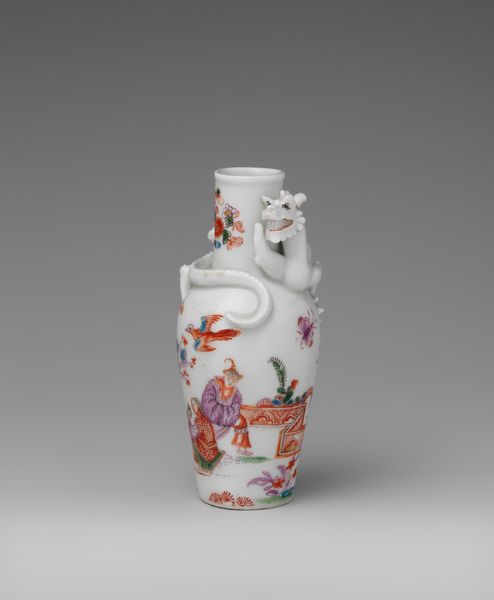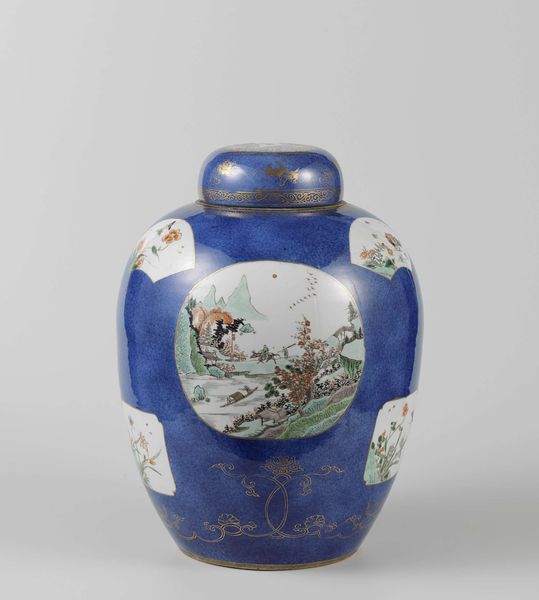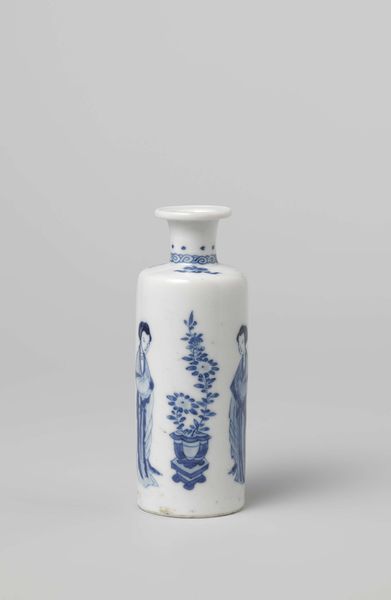
Dimensions: 3 1/2 × 1 1/2 in. (8.9 × 3.8 cm)
Copyright: Public Domain
Curator: I'm immediately drawn to the shape of this scent bottle. It seems to be made from a mold; what are your initial thoughts about the execution? Editor: Well, let's delve into its context. What you see before you is a scent bottle, most likely from the Giles Atelier, dating from 1770 to 1780. Its decorative style is distinctly Rococo, housed at the Metropolitan Museum of Art. I think it presents interesting questions about who had access to the beauty and luxury represented here. Curator: Exactly, the luxury is evident. Crafted from glass with painted enamel decoration, this piece likely held costly perfumes accessible only to the elite. Note how the technique and materials themselves speak of social stratification within 18th-century European society. Editor: I agree, we can decode that status immediately. And let’s unpack the visual narrative further. The inclusion of birds—particularly those that resemble pheasants—amidst flowering branches are meant to convey themes of courtship, and the inscription “Pour Mon Amour,” reinforces that symbolism. How does it speak to you, from a process perspective? Curator: The glassmaking and enamel work require skilled labor, demonstrating a sophisticated manufacturing process. The smooth surface, interrupted by slight undulations, points to glass-blowing and careful molding. We can easily imagine the division of labor required, with specialists in glass production and those skilled in enamel painting working in tandem. The glass is almost a vehicle here... Editor: Agreed. By the late 18th century, these scent bottles transcended simple utility; they functioned as portable emblems of identity, markers of the wearer’s class, taste, and even romantic desires. These were accessories in the performance of the self! Curator: Indeed, viewing it solely as a container overlooks the elaborate chain of production – from glass material sourcing and preparation to artisanal hand painting that rendered the piece unique, thus amplifying its value. Editor: This tiny vessel mirrors vast social dynamics. From the personal affections declared to the grand economic structures that put this beauty in the hands of few, this Scent Bottle provides endless narratives if we only engage! Curator: Precisely, by interrogating how it was made, we can better understand its function beyond aesthetics – unveiling complex realities of 18th-century manufacturing and class relations. Editor: I find it amazing how, when looking through an object like this, the echoes of many voices throughout history can whisper and sometimes scream about injustice and inequality.
Comments
No comments
Be the first to comment and join the conversation on the ultimate creative platform.



